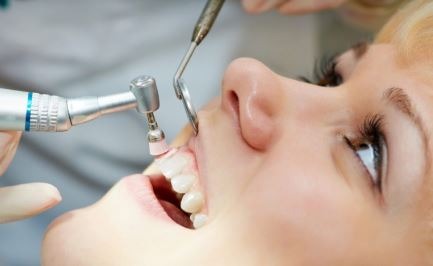Table of Content:
- Why do you need a deep cleaning instead of a regular cleaning?
- Things to watch out for following your deep cleaning
- Post-op instructions following deep cleaning
- Are deep cleanings painful?
- How long does a deep cleaning take?
Why do you need a deep cleaning instead of a regular cleaning?

You need a deep cleaning to reverse gum disease when there’s an abundance of plaque and tartar buildup on your teeth. Gum disease is a serious oral condition that causes your teeth to become loose and infected. As gum disease progresses, it works its way down towards the foundation of your teeth. This creates periodontal pockets which harbor harmful bacteria. Failing to clean these pockets causes more and more damage over time. The only way to stop gum disease from progressing is by getting a deep cleaning. Only a deep cleaning can eliminate these harmful bacteria and provide the necessary condition for healing to occur.
Things to watch out for following your deep cleaning
Deep cleanings are far different from a simple polish and Fluoride. In fact, getting a deep cleaning feels more like a minor surgery than anything else! Here are a few things you should expect following your deep cleaning appointment:
Pain and discomfort
It’s completely normal to experience some pain and discomfort immediately following your deep cleaning appointment. Feel free to take a few Tylenol, Aspirin, or Ibuprofen to alleviate the discomfort. Alternating 1 tablet 500mg Tylenol & 1 tablet 400 to 800 mg Ibuprofen is a good method if your pain is severe. Follow recommended dosage and guidelines as per your doctor. For more severe pain, please contact your dentist for further instruction or to obtain stronger medication.
Tooth sensitivity
Your teeth may become sensitive to temperature changes or sweets for a short time following your deep cleaning session. Tooth sensitivity may feel intense at first, but it typically diminishes over a few weeks. Try using a desensitizing toothpaste, such as Sensodyne, to help with tooth sensitivity during your recovery process.
Bleeding gums
It’s not unusual for some slight bleeding to occur during the next several brushing sessions or throughout the day. Relax, as the bleeding should steadily decrease after the first couple days and it should stop within a few weeks. Stick with your oral hygiene routine to help your teeth and gums heal as quickly as possible.
Inflammation
Occasionally, your teeth roots may become exposed after your deep cleaning. This may result in more open spaces between your teeth. Be sure to continue brushing and flossing your teeth so they heal up quickly. As your swelling settles down, these gaps start to close and your gums return to a healthy, non-inflamed state.
Post-op instructions following deep cleaning
The first few days following a deep cleaning may be slightly uncomfortable. Here are a few things to watch out for following your deep cleaning session:
Modify your diet
Avoid eating right after your deep cleaning session, at least until your numbness has worn off. Be aware that it might be uncomfortable to chew certain hard foods or drink hot and cold liquids. You might want to avoid eating meats, raw vegetables, and bread for a day or two afterward. If you find it difficult to chew your food, stick with a soft diet during the first few days following your deep cleaning.
Maintain proper oral hygiene
Continue your oral hygiene routine as you normally would. Be sure to brush twice a day using a soft toothbrush for two minutes each time. Floss your teeth daily. Use an over-the-counter mouthwash or rinse with warm salt water a few times a day. If given a prescription strength mouthwash, such as Chlohexidine, use it as instructed. Disregard any bleeding that occurs for the next few weeks. The bleeding will slow down so long as you’re maintaining proper oral hygiene.
Are deep cleanings painful?
It depends on how much tartar buildup you have on your teeth. Generally speaking, deep cleanings can be somewhat uncomfortable. For more complicated cases, your dentist will use an anesthetic to numb you up. Once you’re numb, the deep cleaning won’t hurt any longer.
How long does a deep cleaning take?
The objective of a deep cleaning is to remove tartar from your entire mouth. Deep cleanings are typically performed in 1 to 4 sessions, depending on how advanced your periodontal disease is. Here is how you can determine how many sessions your deep cleaning should take:
Single session deep cleaning
If you have ginigivits but no periodontits, then you’re deep cleaning is going to be pretty easy. This means that your gum disease is restricted to your gums and it has not affected your jawbone as of yet. Most deep cleanings that only affect the gums can typically be completed in a single session.
Two-session deep cleaning
Two session your deep cleanings are recommended for most mild-to-moderate periodontitis cases. Typically, your deep cleaning session is divided between the right side and left side of your mouth. Typically, your deep cleaning sessions will be performed under anesthesia to minimize pain and discomfort.
Four-session deep cleaning
If you suffer from advanced periodontitis then your deep cleaning will require 4 sessions, sometimes even more! This is only reserved for the most advanced gum disease cases. Removing heavy tartar buildup and cleaning deep periodontal pockets is a time consuming process. The worst cases of gum disease require multiple sessions to meticulously remove plaque and tartar from your teeth.